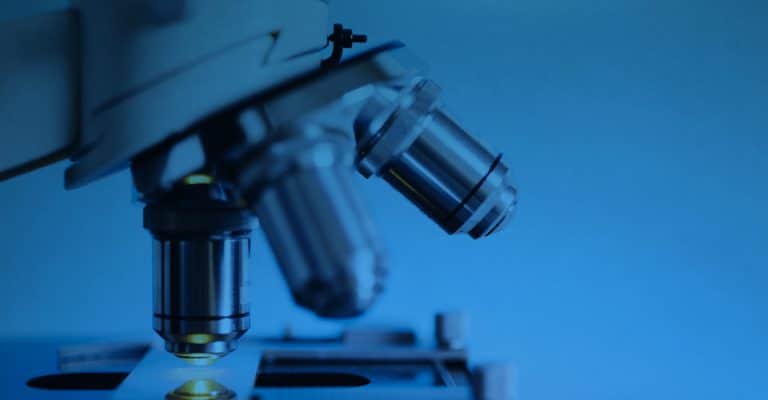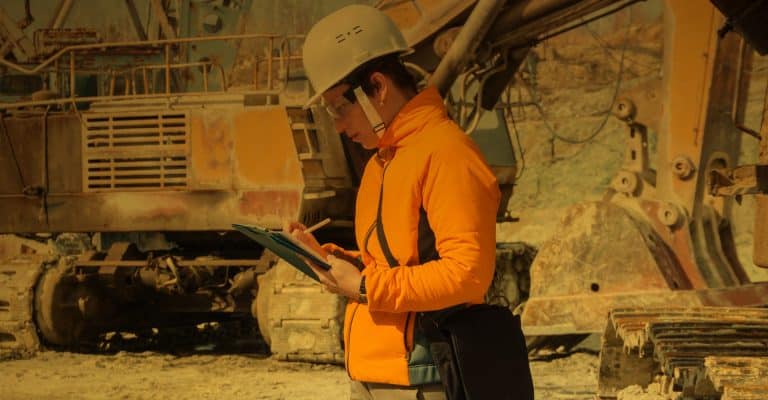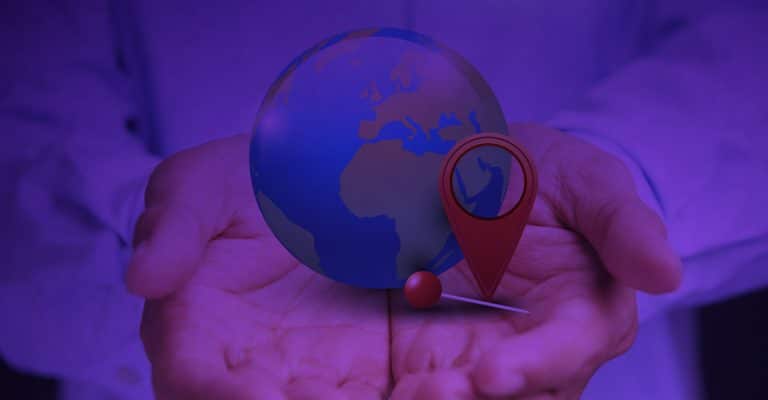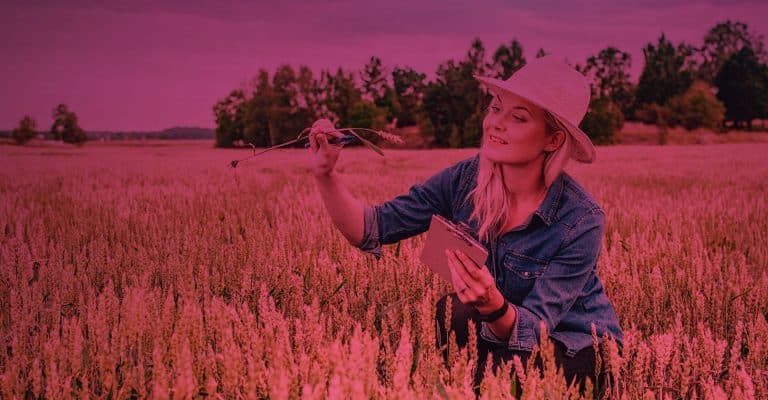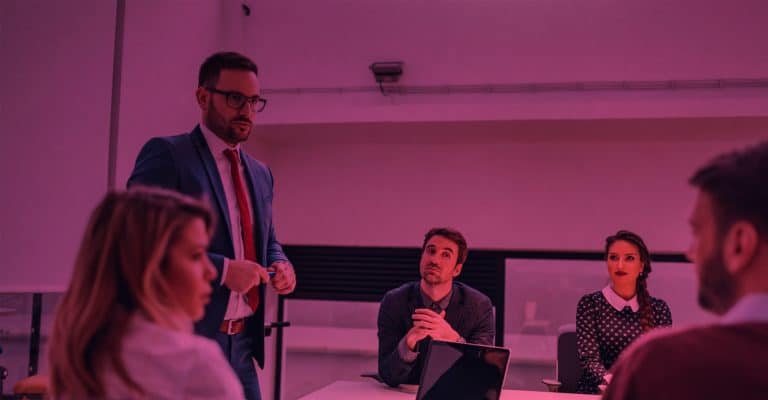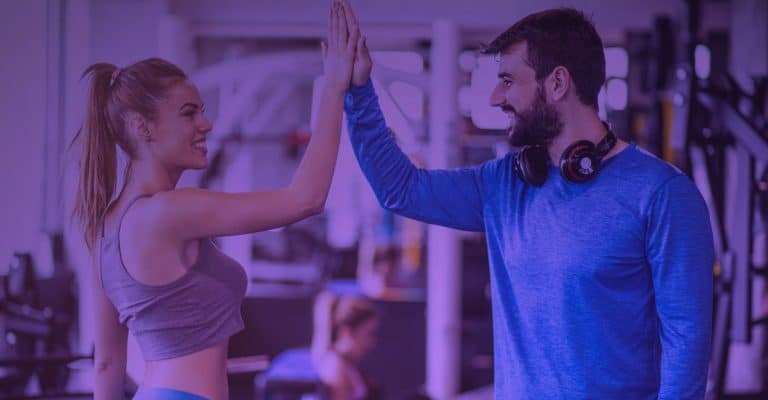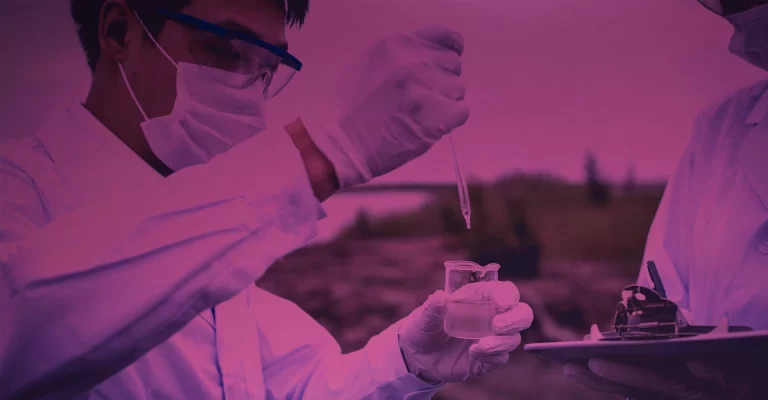

August 2022 Edition!
AIU News + Essays + Education + Culture + Science + Technology + Art + Design + Body + Mind + Environment + Human Rights + Animal Rights + Project Management + About AIU
Interviewed by ITV

JUNE 27, 2022. One of our graduates, Mercy Eberechukwu Opara, was invited by Independent Television – ITV for a live interview on “Impact of Dysfunctional families on Society”. You can find the interview on the following link: https:// www.facebook.com/itvradioabuja/videos/101986718866174 8/?extid=NS-UNK-UNK-UNKAN_GK0T-GK1C&ref=sharing Mercy Eberechukwu Opara has completed a Doctorate program in Education at Atlantic International University.
Go green’ initiative
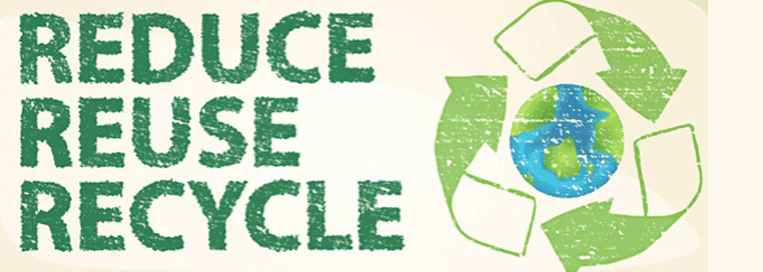
We would like to take this opportunity to cordially invite you to Go Green and join our worldwide initiative. Going green means to take the required steps in this worldwide effort to help conserve our environment. You can start with small things like, switching to more eco-friendly goods, conserving water & energy, etc. Students that enroll in our Eco-friendly payment method will receive a $100 credit towards your graduation documents. This credit will be applied once the student is ready to pay in full. At Atlantic International University we incorporate a green lifestyle to reduce, reuse and recycle. Autopay Advantages • No paper, no printer, no ink! • Schedule your monthly payments automatically! • Choose the date and amount you want debited! • Save up to $500 a year in fees! • Avoid late fees! • Save time avoiding long bank/western union lines! Your tutor, advisors, and staff are here to help you stay active in your program and reach your graduation goal. Staying active academically and investing financially each month ensures you reach that goal.
13 TH INTERNATIONAL CONFERENCE ON Health, Wellness, & Society

Call for Papers This Conference will be held 14-15 September 2023 at UBC Robson Square, Vancouver, Canada.
We invite proposals for paper presentations, workshops/ interactive sessions, posters/ exhibits, colloquia, focused discussions, innovation showcases, virtual posters, or virtual lightning talks. 2023 Special Focus: “Digitizing Health and Wellbeing”
Theme 1: The Physiology, Kinesiology, and Psychology of Wellness in its Social Context.
Theme 2: Interdisciplinary Health Sciences.
Theme 3: Public Health Policies and Practices. Theme 4: Health Promotion and Education.
Become a Presenter:
1. Submit a proposal
2. Review timeline
3. Register
Advance proposal deadline November 14, 2022 Regular registration deadline August 14, 2022 Visit the website: https://healthandsociety.com
Graduated with Distinction

Rajeev N.W. Goonewardene
Master of Science
Education and Physics
Astrid del Carmen Villa Doria
Doctor of Social and Human Studies
Humanitarian Studies
Solomon Tessema Guangul
Doctor of Business Administration
Business Management
Hussein Imam Ali Zainelabdin
Master of Sports Science
Sport Development
Charles John Peter Conrick IV
Doctor of Science
Economics
Cesar Leonel Orellana Menendez
Doctor of Healthcare Administration
Healthcare Administration and Management
16 TH INTERNATIONAL CONFERENCE ON e-Learning & Innovative Pedagogies

Doctor of Education Information Systems in Education
Argentina
José Amado Aramendiz Mármol
Bachelor of Science Civil Engineering
Colombia
Jovanny Montero Ortiz
Doctor of Philosophy Sport Psychology
Dominican Republic
Gladys Odette Revolorio Gordillo
Bachelor of Marketing Marketing
Guatemala
Shek M. Selma
Bachelor of Science Project Management
Liberia
Rasheed Remi Babawale
Bachelor of Economics Economics
Nigeria
Luis Daniel Rivera Pérez
Master of Arts Architecture
Puerto Rico
Seretsa Louise Holland
Master of Human Resources Human Resources
Suriname
Ericka Diez de Martinez
Doctor of Psychology Grief Counseling
USA
Rajeev N.W. Goonewardene
Master of Science Education and Physics
Bermuda
Jhonny Sebastian Garcia Ballesteros
Bachelor of Business Administration Management
Colombia
Razá Torres Jonatahn Andrés
Bachelor of Systems Engineering Systems Analyst
Ecuador
Luis Felipe Rodriguez Herrera
Bachelor of Science Public Health
Guatemala
Herbert Thole
Bachelor of Science Public Health
Malawi
Sunday Olawumi Okeowo
Doctor of Philosophy Finance
Nigeria
Hussein Imam Ali Zainelabdin
Master of Sports Science Sport Development
Qatar
Ali Mohammadi
Post-Doctorate of Literature English Literature
Türkiye
Angela Van Der Kooye
Master of Communications Marketing
USA
Domgouha Wandji Richard
Bachelor of Management Aviation and Transportation Management
Cameroon
David Santiago Garcia Ballesteros
Bachelor of Business Administration Marketing
Colombia
Solomon Tessema Guangu
l Doctor of Business Administration Business Management
Ethiopia
Sébastien Moise Réveil
Doctor of Philosophy Business Administration
Haiti
Mariam Coulibaly
Master of Business Administration Business Administration
Mali
Berthram Chukwudi Ezechi
Bachelor of Science Industrial Engineering
Nigeria
Melvin Goh Kim Ho
Doctor of Philosophy Marketing
Singapore
Joseph Rutaagi
Master of Science Civil Engineering
Uganda
Paulo Cesar Silva Buitrago
Bachelor of Science Civil Engineering
USA
Master of Management Supply Chain Management and Logistics
Cameroon
Eva Bros Zuñiga
Bachelor of Business Administration Business Administration
Dominican Republic
George Obeng
Bachelor of Science Public Health
Germany
Wendy Ann Freckleton
Doctor of Business Administration Economics and Business Management
Jamaica
Demiana Nausi Kumoru
Doctor of Social Work Gender & Soc. Inclusion, MH and Wellness
Marshall Islands
Federico Cedeño Rivera
Doctor of Science Physical Education & Sports
Panam
Cristine Rybnikar
Bachelor of Science Zoology
South Afric
Daniels Ochieng Okwaro
Bachelor of Science Information Technology Management
United Arab Emirates
Azeez Muhammed Ibraheem
Doctor of Philosophy Sociology
USA
George Edwin Herrera Portela
Doctor of Business Administration Finance
Colombia
Marcelino A. Cristian Maria Lopez
Bachelor of Political Science Political Science
Dominican Republic
Reyna Judith López Morales
Doctor of Education Educational Administration
Guatemala
Mohamed Hassan Yussuf
Bachelor of Business Administration Healthcare Administration
Kenya
Juan Carlos Solís Macias
Doctor of Theology Theology
Mexico
Mark Joseph Medellada Taganos
Master of Business Administration Business & Economics Papua
New Guinea
Liz Nataly Piñin Huaman
Master of Public Health Public Health
Spain
Hemely Garcia
Bachelor of Science Psychology
USA
Cesar Leonel Orellana Menendez
Doctor of Healthcare Administration Healthcare Administration and Management
USA
Astrid del Carmen Villa Doria
Doctor of Social and Human Studies Humanitarian Studies
Colombia
Isabel Mateo Lebrón
Master of Science Public Health
Dominican Republic
Kevin Josué Portillo Palacios
Bachelor of Science Systems Engineering
Guatemala
Leah Jepkemei Samoei Chepkwony
Doctor of Project Management Project Management
Kenya
Anthony Oriyebaka Taribi
Doctor of Science Civil Engineering
Nigeria
Bérgimo Vahekeny David Nunes
Bachelor of Science Petroleum and Natural Gas Production
Portugal
Muhieldein Abdalla Ali Zakaria
Bachelor of Business and Economics Business Administration
Sudan
Ali Mohammed Mohmoud
Bachelor of Business Administration Business Administration
USA
Moses Nkhata
Master of Science Conflict Resolution
Zambia
Find More Graduates

Testimonials
FIND MORE TESTIMONIALS FROM A I U STUDENTS HERE: https://wp24.aiu.edu/Testimonials.aspx

Kingsley Omonobi
Master of International Relations
May 11, 2022

Sylvia Chibuike Iwuchukwu
Doctor of Gender and Dev. Studies
May 13, 2022

Rosebells Uviovo
Doctor of Criminal Justice
May 17, 2022

Sawsan Saleh
Bachelor of Interior Design
May 20, 2022
13 Investment mistakes and clues for avoidance Ndawo Victorine | Doctorate in Quantitative Finance | Part 1/2
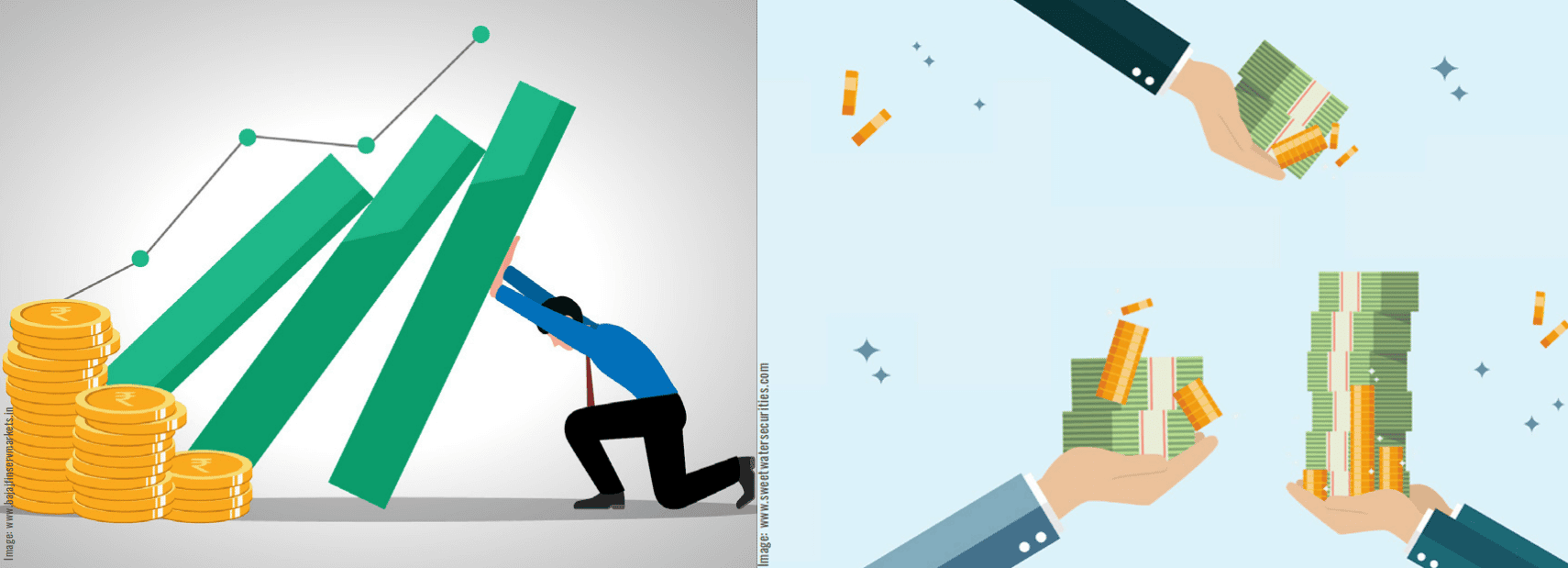
Introduction When good investments are made, the market always offer returns. The major reason why investors missed out this return is because of the various mistakes that they commit. In general, learning is best viewed from getting the best and learning from those who did the best or from those whose performances were outstanding. This best is always the one we can copy. It attracts people’s attention and is often worth celebrating. In business the best is good to learn from as well as the worst (Stammers, 2016). This article focuses on identifying some of the investment mistakes that are likely to be committed. Also, it highlights ways in which such errors can be curbed so that businesses could be managed in order to maximize the output. Coming out with some of the ways that these investment mistakes can be avoided can help entrepreneurs on how to open and sustain a good business. Thus, contributing to foster the UN sustainable developmental goals for the citizens. This worst is important because it helps investors to watch out on certain aspects. The worst performance of someone’s business often helps as an eye opener especially on those things/concepts that led to the poor output. Also, it can even open an entrepreneur’s eye to see and understand a business area that may be no one has never thought could be problematic. So, getting the worst or mistakes of others act as a steppingstone for a more successful approach in business. According to Warren Buffet, a good number of investors do not find pleasure investing. They do not allocate time for it; even their feeling towards investment is questionable. They no longer feel very good at all. Unfortunately, most of the advisors commit the same errors and mistakes that the individual investors makes, (Tillinghast, 2017). So, the actual reason for investor’s underperformance is not only as a result of the different market scenarios but also as a result of the mistakes of the investors and their advisors. It worth nothing that all of us are liable to one or more of these mistakes. Many great investors admit their awareness of investment mistakes and have raised mental blockage so that they are prevented from it. According to (Warren, 2003) “risk is the outcome of not being fully aware of what you are doing”. One of the key issue in investment is that the investors should be fully aware that returns are variant and this variance is continuous throughout. This is one of the key concept the investor needs to be aware of before investing. A good comprehension of it is a prerequisite to the avoidance of the investment mistakes they may be making, or ever attempt to make whether they have a discipline plan or they fall prey to some performance data that may be misleading, (Ben, 2015). So, in this article, some of the investment mistakes and how to avoid them are discussed. Thus paving a clear path towards which successful investment can be achieved.
Mistake 1: Investors not having a clear cut investment goal In the business world, especially in trading the goal of a business is view in a different manner. Usually many people invest their finances because they want to make profit. That is to say after one sells the items, the money obtained is more than the cost price. So that some money is obtained as gain/financial profit. This is alright. This will meet only the individual’s (entrepreneur’s) financial needs and may be contribute to better his life and family only. Obviously the business has solved a problem; which is personal. The issue here is that even though a problem is solved, it has not contributed anything great to the community. A good investment goal is set so as to positively affect the community in which the business is located, (Bodie, ZVI et al, 2013). Having an investment goal is the same as stating where you are going (destination of the investment). If someone on a journey does not have a specific place where he or she is going, then it is either he or she is going nowhere or finds his or herself somewhere he or she does not understand. In business, aspects like from planning of the investment, to the techniques or strategies to be used and designing of portfolio is one of the primary key considerations to make. Selecting the different asset classes are structured with the main goal in the mind as a reference point. Having this goal in mind will point the investor’s focus on both the short term as well as long term investment objectives. As a result other business side tractions will be easily identified and could be avoided.
Clue to have a good investment goal. According to (Batnick, 2018), a good investment goal should be such that that it is beneficial to the entire community. So, a business goal should be framed so as to solve a particular problem in the community. This means that it will affect a large number of people. Consequently, the outcomes will be profitable both to the community and to the entrepreneur. Hence, the problem is resolved and people are rejoicing. Then the entrepreneur is will also be rejoicing not because he has helped to solve a problem, but also because his expectations are met. He is a fulfilled personality that is important and useful to his community. He is regarded as a well valued person in the society. So, before thinking of investing your money in to a business think of What particular issue you are going to address in that community. Once this problem is identified, you then think of the roadmap, (Firth, 2015). Mistake 2: Timing of the market Market Timing is a term commonly used in the stock market. It is an idea that tries to put forward that there is a period (time) that the investor has to be in the market and there is a time that he or she should be out of the market. For example some investors like try to “protect” their capital investment by going out of the market whenever they noticed and sensed a drop in returns. At this point, they load up with stocks that are more risky in anticipation of future recovery. This approach is called timing of the market or market timing. It is not advisable because is an investment mistake. It is not very possible for the market to be calculated. This is because return is not as linear as the investor may think. However, market timing applies to all forms of trading. Below are some of the ways market timing can be identified, (Batnick, 2018). Elements of market timing The mind of the investor is full of some thoughts as given below. • I already have some funds kept side for investing; I am just waiting for things to go down. • Even though I have some money, I think I will invest after the elections. • From the way this country is so indebted, I will wait a bit and see how thing unfold. • I will like to do provision business but why is there no provision store around here? Hmm! May be I wait and see because I suffered to raise my capital. If you have ever had a thought like one of these, then, you are doing what is called market timing. Market timing is an investment mistake. Many people may lure you to commit it. For example, some family members may erroneously jump out of business before a major crisis step in and they may misinterpret it as smartness and lure to do market timing, (Al-Janabi, 2020). It is not advisable because it may not turn out well as theirs turned out. This is because even though it sounds true and real, this advisor is likely depending on the one time he made a good decision and may be forgets the many times his decisions failed. Another reason why market timing is not good is because if you succeed you have beaten the market. In investment, it is difficult to beat the market because at any given point in time in an efficient market, the present price of asset/security gives the estimate of intrinsic value of security, (Chuck A. Arize et al, 2016) Evidence of market timing Getting Information from the Media. Very often investors turn to get information from the media this includes; information about the items that are more costly, rapidly traded stuffs, price fluctuations, scarce commodities and so on. According to (Lei, 2015), sum total of the information (and its value) obtained from the media with respect to the market is zero. The reason being that following up the market on media trends usually creates a result that is often negative. The purpose of the media is for adverts not market information. So, getting and using media information for market projections is an evidence of attempting to time the market. Forecasting. Forecasting deals with fore telling or predicting the price and sales depending on issues like: • Weather • Period of the year • Events at hand • Predicting base of comparative records of the past. • The market trends in the near-by market and so on. Forecasting is dangerous because it reveals more about the person forecasting (forecaster) but say nothing concrete about the next moment and the future, (Bodie, ZVI et al, 2013). Findings show that economists do not have the ability to predict the direction of the economy. The reason is because there are several known and unknown variables that influence it. These variables limit the accuracy of the prediction.
Switching between traded items or class. Switching between tradable items is the investor’s ability to rotating items that are being traded. For instance, a trader may select times/periods or seasons to trade with particular products or to enter the other part of the market. The main purpose here is to protect trade downside. So, they turn to estimate the market trends of a particular item. A good example is a provision trader who calculates and says ok it is Christmas period let me limit the purchase of provision and get toys and Christmas trees obviously I will be able to make more profit since in December especially from the 20th upwards everyone is having the charismas spirit. This idea looks good but it is purely market timing and could be disastrous when items or stocks are being switched periodically or annually. Some of the disadvantages is that, it could lead to: • Reduction in trading capital especially in the case where the items switched were not all sold, or maybe they were sold below the expected or cost price. Reason could be that the period (Christmas) is almost finishing and very little or no sales are made. So, for fear of losing all the invested capital, the entrepreneur chose to sell below cost price. • Complete loss of capital • Inability to really follow up and master the items in trade in which one is involved. • One could be trading for years and have no mastery and so the business sustainability is not guaranteed • Poor selection of the switch items and sales may be poor. There are some traded items that cannot just go together. So, selecting and blending traded items should be done following diversification principles.
In business, switching between items is greatly discouraged because one key concept in trading is that when the investor concentrates on one item he/she understands and masters the trend of that particular good through experience and the taste of customers are captured. So, depending on the period you can meets the needs of many customers this will rather help to increase the traded volume and generate more profit. It even helps you to build lasting relationships with the clients and the business sustainability is sure. Therefore, switching from one class of assets to another is called market timing, (Piketty, 2014). This kind of supposed tactful way of trading often gives less than expected results. Usually when the period is over, some goods are left unsold. Warren Buffett a modern time investor has greatly discouraged market timing. Amongst all the investment techniques and strategies, market timing is one of the most greatly mocked, (Ben, 2015). He explained further “forecasting is the senseless thing that an investor can do. I have never met a man that has successfully timed the market”, (Warren, 2003). So, overall one can conclude that market time is not a good practice. You cannot really decide when to enter adequately and when to go out of the market. Neither can one determine when to leave one part of the market and go to another part of the market. This is a common tendency amongst traders that looks like common sense trading and at times one may be deceived to think that it works; may be simply because upon one such manipulation some gains were obtained.
How to avoid market timing Understanding market volatility. One of the best way to avoid market timing is to first acknowledge the volatility of the market. Market timing is a temporary investment approach. This is because there are so many market disorders. Investors must therefore understand the major movements in the market. When the market movements are understood, then their frequencies should also be noted. Let’s consider this life example of trading fresh tomato in a quarter market where the researcher lives. Over the period, the market scenario is as follows: It will be difficult to know why a basket of tomatoes that was sold between 2500 francs to 3000 francs during the first week of December 2021 and by the third week the price of that same basket of tomatoes went up to 11000 francs. Looking backwards, by September 2021 and November of the same year the prices of that same basket fluctuated between 2000 francs and 11000 francs. This is a clear indication of the volatility of the market. So the best way out of market timing is to acknowledge that the market is volatile. With this in mind the investor should endeavor to understand the market tumor. Have an idea and frequency of trade within the intervention to have a possible return however small because the market is volatile.
Consistent trading. Another solution is that, it is better and advisable to carry on consistent trading. That is to say remain investing and focus to know the investment portfolio than attempting the trade-in and trade-out of the market. By engaging in regular investments which is the opposite of market timing. Since one cannot successfully predict the market, because an investor can be out of the market and an unexpected market scenario surges upwards. For instance, an investor may predict that the market will go down. So, he sell off the stock and protects the money by involving in some conservative investments. Then realizes that while his money is not in that stock, the market trend shoots upwards and there is a period of high performance. Thus, this investor timed the market wrongly. One of the easiest way to get a solution of a problem is to look for the opposite of that problem. The opposite of market timing is regular investments. This means that the investor buys stock, hold and observe as the market goes through different cycles. Once upwards trend shoots more upwards, he launches the sales (exit).By so doing, regular investment is encouraged. Regular investment, and constant portfolio checking is one of the easiest way to track the investment goal, and thus avoid timing of the market, (Baker, 2019). To be continued
Learning
Selective mutism What teachers should know about it.
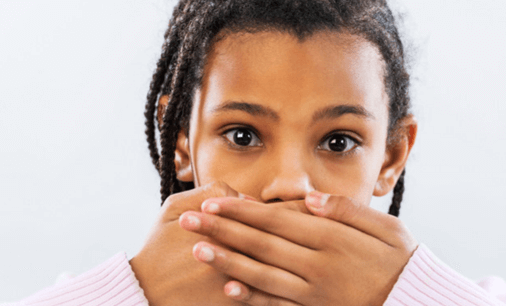
Selective mutism (SM) causes some kids and teens to be too fearful to talk in some situations. They might be able to speak just fine in comfortable environments (at home with family members), but they can’t speak in other places or situations (at school or in public). SM is not a willful refusal to speak, but an anxiety disorder, and experts think it’s an extreme form of social phobia. Kids and teens with SM might seem extremely shy or withdrawn, avoid eye contact, and remain motionless and expressionless, sometimes with awkward or stiff posture or body language. Before school or social outings or events, they may get headaches or stomachaches, or even vomit or have diarrhea. Students with selective mutism may need preferential classroom seating near the teacher or a friend, use nonverbal communication to answer questions (pointing, nodding their heads, using thumbs up or down, or facial expressions, etc.); take tests in a comfortable area outside the classroom; miss class time to receive speech therapy or counseling; small class sizes or small-group learning environments; or to be socially isolated and at risk for bullying. … Teachers can help students with selective mutism by developing warm, supportive relationships, even if the interactions are nonverbal; easing anxiety in the classroom by pairing them up with a buddy; encouraging participation, independence, and assertiveness in all classroom activities without pressuring them to speak. … Read full text:
Humans They have always been wrong about humans.
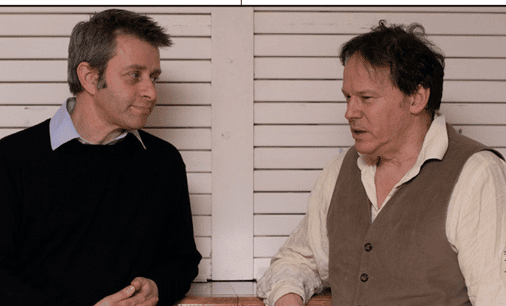
“It’s time to change the course of human history, starting with the past” … David Wengrow and David Graeber have synthesized new discoveries about peoples like the Kwakiutl, (Pacific Northwest); the foragers of Göbekli Tepe, (Turkey, 9500–8000 BCE); and the Indigenous inhabitants of a full-dress metropolis 4,000 years ago in what’s now Louisiana. … Wengrow and Graeber argue that the life of hunter-gatherers before widespread farming was nothing like “the drab abstractions of evolutionary theory,” which hold that early humans lived in small bands in which they acted almost entirely on instinct, either brutish (as in Hobbes) or egalitarian and innocent (as in Rousseau). In contrast, The Dawn of Everything authors represent prehistoric societies as “a carnival parade of political forms,” a profusion of rambunctious social experiments, where everything from kinship codes to burial rites to gender relations to warfare were forever being conceived, reconceived, satirized, scrapped, and reformed. …the authors use this insight to overthrow all existing dogma about humankind —to reimagine, in short, everything. … For instance, while the Kwakiutl practiced slavery, ate salmon, and maintained large bodies, their nextdoor neighbors, the Yurok, despised slavery, subsisted on pine nuts, and prized extreme slimness…. Read full text:
AIU makes a huge contribution to the world by giving new scient ifics the space for original investigations and research. Visit MyAIU Evolution
A crack in the Earth’s magnetic field lasted 14 hours.

On Thursday, July 7, 2022, photographs in the United States and Canada had the chance to capture a stunning sight. A crack opened in Earth’s magnetic field which lasted for nearly 14 hours, allowing solar winds to enter and cause a colorful aurora in the sky. While a crack in the magnetic field sounds dangerous, it is actually quite normal. “We’ve discovered that our magnetic shield is drafty, like a house with a window stuck open during a storm,” Harald Frey, lead author of a study on this discovery back in 2003, says. This phenomenon is caused by co-rotating interaction region (CIR) from the Sun, which is sometimes launched in Earth’s direction. However, while most magnetic fields are thought to last a short amount of time, this one endured for several hours, leading to a G1-class geomagnetic storm. Fortunately, however, this event did not cause any power outages or issues with satellites —which can sometimes occur during these cracks in the magnetic field. Instead, the leaked solar winds produced beautiful northern lights in the US and Canada. …
Electron whirlpools Scientists witness electricity behaving like water.
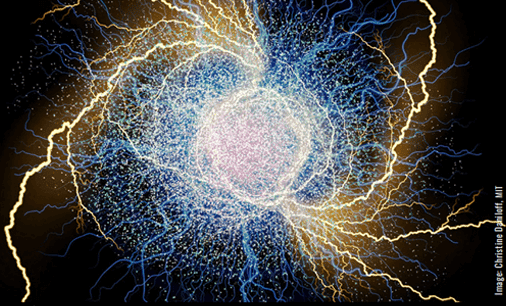
Researchers at MIT have observed “electron whirlpools” for the first time. The bizarre behavior arises when electricity flows as a fluid, which could make for more efficient electronics. However, it has been predicted that under ideal conditions —at temperatures close to absolute zero and in pure, defect-free materials— quantum effects should take over their movement and allow them to flow as an electron fluid with the viscosity of honey. If scientists could harness this, it could make for more efficient electronic devices where electricity flows with less resistance. In the new study, the MIT team has observed a clear sign of an electron fluid —whirlpools. These are common structures in fluid flows but not something that electrons can usually produce, and as such they’ve never been observed before. The researchers spotted the electron whirlpools in crystals of tungsten ditelluride. “Tungsten ditelluride is one of the new quantum materials where electrons are strongly interacting and behave as quantum waves rather than particles,” said Leonid Levitov, coauthor of the study. “In addition, the material is very clean, which makes the fluid-like behavior directly accessible.” In this material, the team etched a narrow channel with a circular chamber on either side, then ran a current through it and measured electron flow. … Read full text
Get a better knowledge about our rights and the way we can use them on a daily basis to prevent any abuse or limitations of them. Visit MyAIU Human Rights.
Out of my mind Representation matters
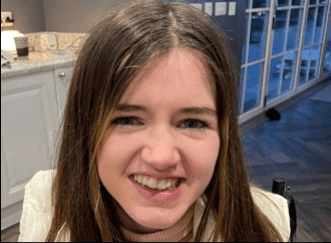
Disney is set to film a new movie about a girl with cerebral palsy who’s nonverbal and uses a wheelchair and her experience seeking out an inclusive education. The movie is an adaptation of Sharon M. Draper’s novel Out of My Mind. The story focuses on Melody Brooks, a preteen with cerebral palsy who is unable to speak or walk, and who hasn’t gotten the same opportunities as other kids her age. But when a young educator notices Melody’s capabilities, she encourages her student to pursue mainstream education. The movie will star Phoebe-Rae Taylor, who has cerebral palsy and uses a wheelchair herself, as Melody. Disney said that Taylor, 12, is a resident of the United Kingdom who was discovered through a worldwide search. … Read full text:
Amber Bracken Kamloops Residential School
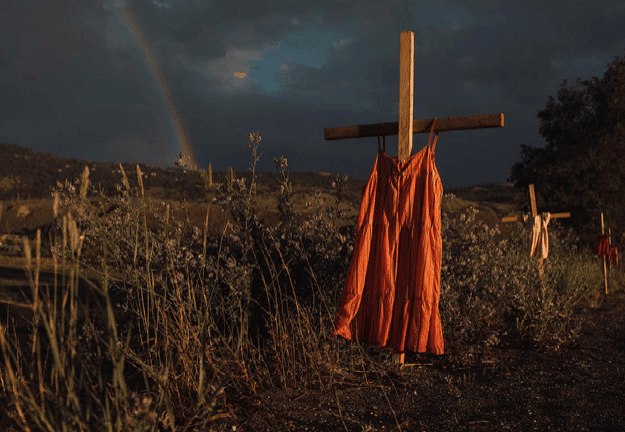
For the first time in the World Press Photo’s 67-year history, the Photo of the Year is a photograph without any people in it. Amber Bracken’s photograph commemorates the children who died at the Kamloops Indian Residential School, an institution created to assimilate Indigenous children, following the detection of as many as 215 unmarked graves in Kamloops, British Columbia. Effendi said about the photograph: “This is a quiet moment of global reckoning for the history of colonization, not only in Canada but around the world.” Residential schools began operating in the 19th century as part of a policy of assimilating people from various Indigenous communities into Western, and predominantly Christian, culture. Upwards of 150,000 children passed through the doors of residential schools, and at least 4,100 students died while at the schools, as a result of mistreatment, neglect, disease or accident. Bracken said about her photograph: “Colonial history is not ancient history […] this is a living history that survivors are still grappling with. If we want to talk about reconciliation or healing, we need to really hold and honor the heart that still exists there.” … Read full text
‘Mirror' fabric Can cool wearers by 50C
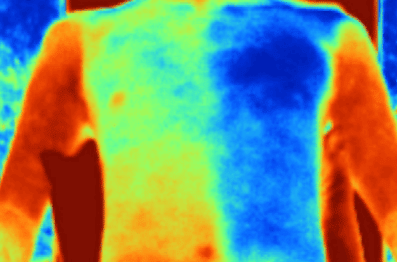
To make clothing that beats back the Sun, fashion designers typically use light-colored fabric, which reflects visible light. But another method reflects the Sun’s electromagnetic radiation, including ultraviolet (UV) and near-infrared (NIR) radiation. NIR warms objects that absorb it and slowly cools them as they emit it. That cooling process, however, is stymied by our atmosphere: After being emitted from an object, NIR is often absorbed by nearby water molecules, heating up the surrounding air. To speed up the cooling process, researchers are turning to mid-infrared radiation (MIR), a type of IR with longer wavelengths. Instead of being absorbed by molecules in the surrounding air, MIR energy goes directly into space, cooling both the objects and their surroundings. This technique is known as radiative cooling … Read full text:
Live a better life learning how to keep your body, mind and soul balanced. Visit regularly MyAIU Body / MyAIU Mind / MyAIU Spirit and MyAIU Energy.
Fall asleep faster by making a to-do-list right before bed.

When I was in high school, insomnia made it a struggle to fall asleep at night. … Fortunately, I managed to regain control of my sleep schedule, and on most nights I now fall asleep within 15 minutes. What did I do? I started writing to-do lists every night before bed. When I started making nightly to-do lists, I didn’t have any idea it was going to help me sleep —I just wanted a way to better track my priorities and productivity from day to day. So every night before bed, I would write down three things I wanted to do the next day. I would also note one good thing that happened during the day, no matter how small. The whole process takes me 5 minutes at most. I later learned there may be a connection between clearing our minds and falling asleep. According to a study by researchers from Baylor and Emory universities, making a list of upcoming tasks can help you fall asleep faster. The Baylor and Emory study looked at people who journaled before bed about completed tasks and activities and compared them with a second group who made a to-do list of things they needed to do over the next day or two before bed. The study showed that writing to-do lists helped people fall asleep significantly faster than writing about completed activities. … Read full text:
Under anesthesia What happens to our minds?

Scientists have known since the 1940s that raw electroencephalogram (EEG) signals could be used to monitor the depth of a patient’s anesthesiainduced sleep. In the 1990s, they began to crunch this raw data to deliver a numerical index value thought to measure an anesthetized patient’s level of consciousness. But the practice of actually tracking patients’ brain activity with EEG in the operating theater is still so rare that little data is available on how widespread it is. Renowned anesthesiologist Emery Brown began using EEG to track patients’ brain waves —electrical activity in the brain— in 2011. … Brown and his colleagues have been experimenting with adjusting anesthetics according to what they see on EEG monitors. “You can actually see, based on the patterns, how unconscious someone is and you can dose your drugs accordingly,” says Brown. … Outside of the operating room, researchers have also begun conducting experiments by administering general anesthesia to healthy people who are not undergoing surgery. Studying what happens when they emerge from their anesthesia-induced sleep can provide a roadmap of how the brain should recover. Mashour and his colleagues have found that the healthy brain bounces back quickly, within just a few hours. They’ve also found that some higher, more complex functions, like executive function, are the first to return. … Read full text:
Find Open Courses and a world of learning granted by AIU at courses.aiu.edu Help others study and change their lives. Visit MyAIU Pledge.
The Arctic Why is it warming 4 times as fast as the rest of Earth?

You may have heard that the Arctic is warming more than twice as fast as the rest of the planet, in large part due to a gnarly feedback loop: As more sea ice melts, it exposes darker waters, which absorb more of the sun’s energy, further accelerating the melt. That’s wrong, as it turns out. Things are actually even worse. Those underlying warming processes, known as Arctic amplification, are indeed happening. But their rate is far more catastrophic than scientists first understood. Thanks to a torrent of temperature data, by late 2021 researchers were estimating that the region is actually warming more than four times faster than the rest of Earth, with huge consequences for the whole planet. And now, a June paper published by a separate group in the journal Geophysical Research Letters puts an even finer point on the problem, showing that over the last few decades, the Arctic hasn’t warmed at a consistent, predictable rate. “We have seen that these changes are not smooth, as has been believed until now. They occur basically in two discrete steps: one around 1985 and then around 2000,” says Petr Chylek, a research scientist at the Los Alamos National Laboratory and lead author of the study. “After this last increase in the year 2000, Arctic amplification is about 4.5 compared to two or three [times as fast], as it was before. So it is a significant change.” …
Thunderstorms are getting stronger. Is something supercharging them?
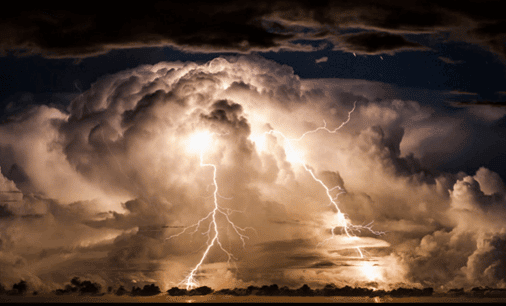
At a small airport amid oil facilities and petrochemical plants east of downtown [Houston, TX], Katia Lamer released a weather balloon carrying a radiosonde … Its launch is just one part of a wide-ranging, yearlong study — the Tracking Aerosol Convection Interactions Experiment (TRACER). The project is designed to help scientists better understand how violent convective thunderstorms form —and whether the pollution emitted from fossil fuel and chemical infrastructure, omnipresent in the Houston area, might be making them stronger. Even though thunderstorms are common, climate scientists and meteorologists still struggle to understand their inner workings, Lamer said “Convection has the power to dump a lot of water in one place,” she added —and major downpours that can cause flooding have already increased in frequency over the last few decades— so filling in those gaps is key. One crucial question is just how important aerosols —particles emitted from oil and gas refineries and factories, cars and trucks, along with other human and natural sources— really are in determining when a thunderstorm forms or how strong it is. The TRACER project, which will run through September, hopes to provide some answers to improve weather forecasts and climate models. … … Read full text:
Find support for your own unique art and design projects, or support other creative projects at MyAIU Research
Anti-hijab protest Women’s rights activists call for it amid crackdown
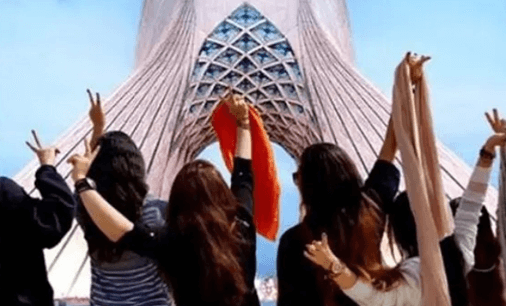
Authorities in Iran are harshly cracking down on ‘bad-hijab women’ and will hold a ‘hijab rally’ on Tuesday [July 12], but women activists have their own plans to protest. (In the jargon of religious and political hardliners women who are unwilling to wear the hijab and display their displeasure by wearing small and colorful headscarves with tight-fitting, short dresses are called ‘bad-hijab’ ones.) President Ebrahim Raisi on Wednesday called lack of compliance with hijab rules “an organized promotion of [moral] corruption in Islamic society” and ordered all government entities to strictly implement a “chastity and hijab” law drawn in 2005 by the Supreme Council of the Cultural Revolution. Authorities have also launched an extensive campaign this year against women they call ‘bad-hijab’. In addition to crackdowns by the ‘morality police’ on the streets, some officials have ordered extra measures, including to government offices, banks, and public transportation authorities to withhold service to ‘bad-hijab’ women. In the past few weeks authorities have also shut down some businesses such as cafes and restaurants and detained their female patrons for ‘improper hijab’ and arrested nature tourists for flouting their hijab, dancing, and drinking in the depths of northern forests. Meanwhile, authorities this year named the 12th of July as Hijab and Chastity Day and are planning rallies at stadiums and other places to honor, celebrate, and promote the Islamic …
The Kayapo Project The importance of rainforests and their guardians.
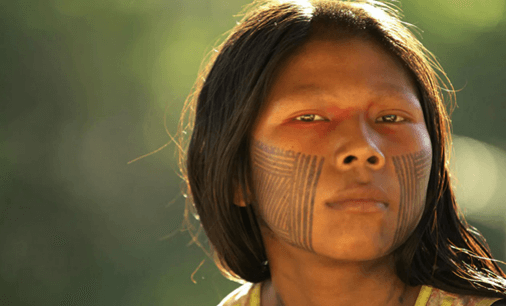
Whale shark Increased stranding along Andhra Pradesh’s coast.
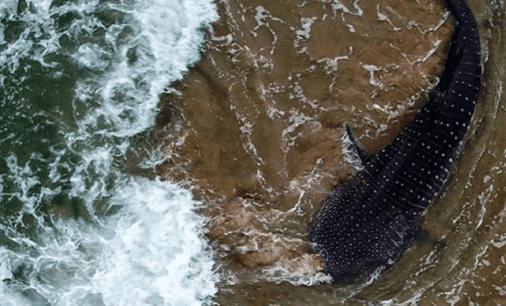
Since 2021, the fishermen in Andhra Pradesh (AP, Bay of Bengal) have noticed an increase in whale shark sightings along the coast of Visakhapatnam (Vizag). Researchers say that not much is known about this largely depleted species, making it all the rarer to spot it. But fishery experts, researchers and local fishermen say that until late 2007, the whale shark was a rare visitor to the coastal Andhra region (East Godavari River Estuarine Ecosystem), but the number of sharks has increased in recent years. … The whale shark is a pelagic species, which means that it lives in open water, both deep and shallow waters. The species favours warm waters with a surface temperature between 21 and 30º Celsius (69.8 and 86º Fahrenheit). Its migratory patterns causes it to travel between national Exclusive Economic Zones and into the high seas over the short term while also migrating farther away from shore over their lifetimes. Whale sharks are also known to come inshore closer to the coast to feed. Copepods, arrow worms, fish eggs, crab larvae, coral spawn, and krill are among the planktonic species it feeds on. This could be a reason for it getting caught in nets closer to the shore. According to a report on increasing numbers of whale sharks along the AP coast, records estimate that 20 whale sharks were killed as bycatch along AP’s coast, over 110 years between 1889 and 1998. …
Insects Are they able to feel pain?
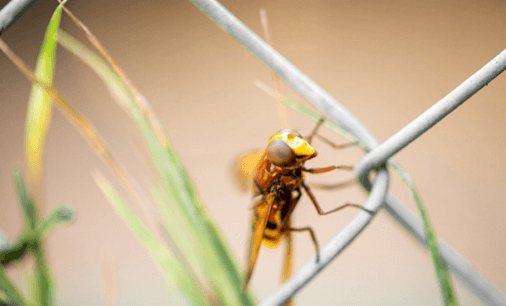
I n a paper published in Proceedings of the Royal Society B, Matilda Gibbons, Lars Chittka and Sajedeh Sarlak (Queen Mary University of London / University of Tehran) describe what they encountered in attempting to find out whether insects feel pain. … They began by noting prior research has shown that both animals and insects have physiological systems that react to what in animals would be described as a painful experience. Such experiences have been separated into what has come to be known as nociception —the difference between responding physically to a physical trauma and any possible pain associated with the event. Both respond if you cut off one of an insect’s legs for example. But what has not been clear is if doing so is painful for insects. … Humans have been shown to be able to shut down a pain response if it happens during an emergency —some people do not realize they have been injured in a car crash until they are being treated at a hospital. This is possible because such a traumatic event can push the brain to begin producing opiates. Insects do not produce opiates, but they do produce other neuropeptides that could serve the same purpose. They found that such neuropeptides are produced in insects during traumatic events, suggesting they are capable of descending order of nociception, which is possible evidence of them feeling pain. …
Find Open Courses and a world of learning granted by AIU at courses.aiu.edu Help others study and change their lives. Visit MyAIU Pledge.
Campus
Off the grid Meet the people leaving modern life behind

Two years ago, Kirsty Tizard’s morning routine was exactly that: a routine. Every day she trekked up the road, checked into work at her café, spoke to the same people and completed the same tasks as the day before. On paper, Kirsty was ticking all the boxes of affluent middle-class existence —as a café owner her work-life was something many dream of. But just below the surface she felt restless with the repetition. She and her husband had always been staunch believers in sustainability, and the idea of doing something radically different had been hanging between them for some 10 years, like an unfinished conversation. The ball finally dropped when, in April 2017, a close relative the same age as Kirsty passed away, prompting a moment of deep reckoning for the two. “I got an intense sense that life was short, that I should do with it what really mattered, and fast,” she says. So goodbye café it was. The pair quit their jobs, uprooted their four kids and left a comfy house in Devon behind to move 60 miles away into a wonky woodland cabin —and a brand new existence. Tinkers Bubble is a 14-member-strong community of like-minded people in Somerset, England who have decided to untangle themselves from the bondages of modern life to pursue a simpler existence. Kirsty’s new morning routine goes like this: wake up with the sun, head down the hill, milk the cows, followed by communal breakfast complete with gasheated tea, freshly harvested vegetables and eggs laid that morning. The rest of the day she spends weeding and tending to the flock while others around her cut wood, maintain homes and cook. When she washes, it is usually in the nearby lake.
Kirsty is part of a movement quietly spreading throughout Europe and the United States: the off-gridders. People who have, for whatever reason, decided to live off the radar, away from supermarkets, power bills and traffic jams, closer to nature and their own sustainable power solutions. “Grids” refers to the familiar spiderwebs of modern living: the criss-cross of phone and internet cables, roads and sewers, plus the intangible networks of finance and food supply. For most people who rely on these grids, they can at times feel stifling, and their environmental impact is hard to ignore. To go off-grid is to disentangle oneself from one or more of these systems. The Tinkers Bubble bunch —who don’t rely on any of these networks at all— are at the extreme end of the off-grid spectrum. “Extreme in a good way”, boasted Kirsty contentedly through the camps’ one communal phone. Most of the other off-gridders 5 spoke to begrudgingly deemed having a personal phone necessary, although predictably, few of them were quick repliers. One particular grid represents the ultimate obstacle for most off-gridders since it is by far the hardest to leave behind. The electrical power grid, its long transnational cables reaching across most developed economies, makes up around 2/5 of carbon emissions (it is estimated that 30% of electrical power is lost on its journey across the grid). Emancipating oneself of electricity is therefore by most estimates the single most impactful step an individual can make towards carbon neutrality. To do so, off-gridders generate their own electricity in various ways, using water, wind and the sun.
It’s this promise of sustainability that provides the initial draw for many off-gridders. Living in a smaller house, powering it yourself and supplementing your diet with vegetables from a small plot of land makes you about as sustainable as it’s possible to be in 2020. Martin Burlund, a 35-year-old journalist from Denmark, is another such hardcore off-gridder, who has built his own tiny home south of Copenhagen which he selfsupplies with power, plumbing and drinking water. For him, off-gridding is a kind of selfimposed competition. “I want to be the most sustainable individual I can possibly be,” says Martin. His prize is a rewarding feeling of full ownership over his house and therefore his life. “When I sit there drinking coffee in my garden, knowing that I personally built every bit of the house I am looking at, I feel like a king. I trampled those walls into shape with my own feet and my walls combined cost 1,000 kroner [€120]. It’s sort of like a joke that never gets old.” Martin tells 5 he was inspired to go off-grid after reading the cult novel Doppler by Norwegian author Erlend Loe, in which a dad gives up his mundane suburban life in favour of pitching camp in a nearby forest and befriending an elk named Bongo.
The number of people living in off-grid communities in the US and Europe has doubled over the past ten years. This development is evident in the growth of Off-grid.net, a forum for off-gridders to share tips, hopes and fears about taking the big leap. In its chat rooms, the desire to escape the urban pressure cooker is palpable, with posts like “Looking for a fella to escape the rat race with” and “Wanting to live like a modern-day Thoreau, who’s with me?”, interspersed with practical tips for surviving without power, and a map to help people find off-grid communities in their area. Nick Rosen is the founder of the website and the author of two books on the off-grid movement. He has also recently bought an acre of land in the south of England on eBay, where he plans to build a woodland shed. He tells me that throughout the 12 years he’s been studying off-gridding, its popularity has always increased in times of crisis: “When people feel insecure about the state of society, the desire to do something different becomes stronger.” This year’s coronavirus outbreak was no exception. Most of those messaging Nick at the moment are people who have realised they can actually work from home, “and that home can be anywhere with a phone signal”.
But there’s another —differently poised— group who have been thrown into offgridding post-corona: the recently jobless. Especially in the US, says Nick, “hard-working folk can come into a situation where they simply can’t pay their rent. At that point you might choose to buy a small plot of land somewhere inexpensive and start again.” This less glamorous version of off-gridding is not the one in evidence on Instagram and Facebook where the hashtag #offgrid brings up a swarm of voyeuristic snaps including designer-clad babies brushing horses and muscular men building clay houses. While this is the side of off-gridding most easily viewable to an outsider, and one that Nick agrees exists, off-gridders are actually a diverse mix of people. “I would say it is about 50/50, those doing it out of need vs.
those doing it out of desire.” Perhaps these internal variations are why the off-grid trend has not condensed into a cohesive global movement yet. Few of the offgridders that 5 spoke to identified themselves as part of a larger crossborder campaign or community. Rather as local activists making small rings in large waters: leading by example. Lars Keller, for example, is one of the original members of Friland, a community of a hundred in western Denmark whose main ambition is to get off the “economic grid” i.e. the property ladder, and become debt-free. At Friland, people usually build their own house in around three-to-five years, in which a family can live for around €2,500 a year. “We end up having people from all walks of life here because it’s economically accessible. Including people who would struggle to find their place in regular society.” At Friland people have little or no mortgage to pay off, which means that “they can do what they’re passionate about rather than work out of necessity”, says Lars. It’s a place where people paint, write or garden their days away. This, according to Lars, makes Friland a model of how society could be happier overall. Was this what Karl Marx was dreaming of when he wrote that a man will be free of alienation when he “hunts in the morning, fishes in the afternoon and criticises after dinner”? You don’t have to be a communist to understand the appeal. In a practical sense, there are also plenty of reasons why community off-gridding is a favourable option. “There’s this stereotype of someone going off into the forest to be a grid-less hermit, but that’s actually the least effective way to do it,” says Nick Rosen, whose research suggests that communities are far more likely to thrive off-the-grid than individuals. “It’s much better to share the skills.” …
The two decades that Lars has spent overseeing Friland have taught him the same, he speaks of this in symphonic terms. “Living together creates synergy in terms of sustainability. One might be really into recycling; all the others can learn from and reap the benefits of her expertise.” The synergy isn’t boundless, however. As Nick tells me, “the idea of the private household is deeply ingrained in most people,” which is why most off-grid communities maintain traditional family units. They also don’t make unitary decisions or summon residents to formal roundtable meetings. As Nick puts it: “people want a tribe, not a commune”. It all sounds lovely, but aren’t off-gridders just a bunch of hippies glorifying the stone age and leaving society behind when it needs sustainable thinkers the most? Nick Rosen is adamant that this is not the case: “Hydro-power, wind power, these are all highly sophisticated technological innovations. There’s nothing not modern about it.”
No one we spoke to suggested a total, immediate off-gridding as the answer to all the world’s woes. “We still need cities, governments and power sources, but much fewer,” said Nick when asked what his ideal version of the future looked like. “We just want to show that there’s a different way to do it.” In fact, getting governments to listen, in small and big ways, is high on the agenda of many off-gridders. Martin wants to make straw one of Denmark’s go-to building materials. Lars is determined to get municipalities to ease building permit restraints. And Nick has spent the best part of seven years campaigning to start a 3,000-household-strong off-grid community somewhere in the UK. Right now, it’s baby steps, as it’s painfully difficult to even get permission to build a single off-grid house in most places in Europe, let alone a whole village. “Currently we are basically just little bulbs of inspiration,” says Martin. “If we want to make any serious difference, change has to be policy”. The current wave of off-gridding builds on a long history —ever since industrialisation washed over Europe, people have been dreaming up alternative housing solutions. But there’s a sense that this time, it’s different. Jettie Nielsen, 63, has been an activist for more than 40 years and is currently leading the charge to build Denmark’s first totally off-grid community on the island of Funen. She believes there is something special about this movement, something she hasn’t seen before. “It’s got a totally different political broadness — people from all walks of life are getting on board because it can accommodate all sorts of agendas”. She’s personally very excited to move into the 25 sq metre house that she’s designed, having lived in a big two-storey with her husband for nearly 20 years. “I just need the space I need and not much more,” she says. What she has now, simply feels too big. “I’ve got all these rooms, and what’s in them?” she laughs. “A bunch of crap I never use, gathering dust.” When she puts it like that, what she’s giving up doesn’t sound so indispensable after all. Still, life off the grid is not the romantic adventure that dreamy city-dwellers might imagine it to be.
Laura has learnt this the hard way over the past six weeks. “Transformation is hard,” she says. “If you want to break out and do something radically different, there’s always a cost involved. If there wasn’t, everyone would do it”. Martin echoes the sentiment: “We talk a lot about what we can do for the climate, but we never talk about the things we actually have to give up,” he says. “And we do have to give some things up.” In the climate vs. comfort conundrum, most have yet to truly pick a side. Not the off-gridders, who believe that waiting is costly. It’s clear that, for a movement full of idealism, packed with dreams and hopes for a better future, its followers are a bunch of stone-cold realists
Read full text by Johanna Kinnock: https://fivemedia.com/articles/off-the-grid-meet-the-peopleleaving-modern-life-behind/?utm_source=newsletter&utm_medium=email&utm_campaign=Nautilus
Read full text by Umair Haque:
Help others study and change their lives. Visit MyAIU Pledge. Learn how to have a better financial control. Visit MyAIU Money.
Oyasai Crayons.

A crayon made from oil and wax from rice bran and the outer leaves of vegetables that are discarded during harvesting. Even small children can play safely with this crayons. oyasai-crayon.com
Marigorri.

Neck warmer with filter. Adjustable, made of thermal fabric. kukuxumusu.com
Picto ghost net watch.

The Picto Watch, a Danish design from 1984, has been reborn as an eco-friendly version made from fishing nets that have been lost or abandoned in the ocean. store.moma.org
Assata Shakur. (1947–)
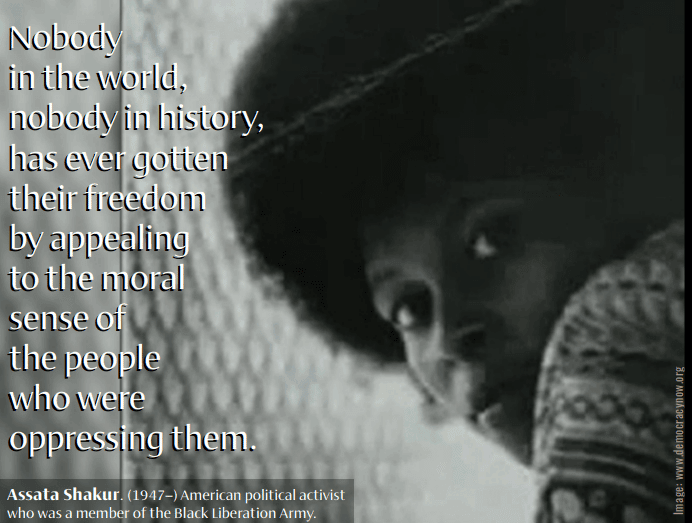
Disney is set to film a new movie about a girl with cerebral palsy who’s nonverbal and uses a wheelchair and her experience seeking out an inclusive education. The movie is an adaptation of Sharon M. Draper’s novel Out of My Mind. The story focuses on Melody Brooks, a preteen with cerebral palsy who is unable to speak or walk, and who hasn’t gotten the same opportunities as other kids her age. But when a young educator notices Melody’s capabilities, she encourages her student to pursue mainstream education. The movie will star Phoebe-Rae Taylor, who has cerebral palsy and uses a wheelchair herself, as Melody. Disney said that Taylor, 12, is a resident of the United Kingdom who was discovered through a worldwide search. … Read full text:
Conditioner Bar.

Ready to ditch the single-use plastic bottles from your shower? Start with the Moisturize Conditioner Bar from HiBAR. earthhero.com
Say what?
“Before you criticize someone, you should walk a mile in their shoes. That way when you criticize them, you are a mile away from them and you have their shoes.” —Jack Handey
Source: parade.com
Master in Project Management - SCHOOL OF BUSINESS AND ECONOMICS
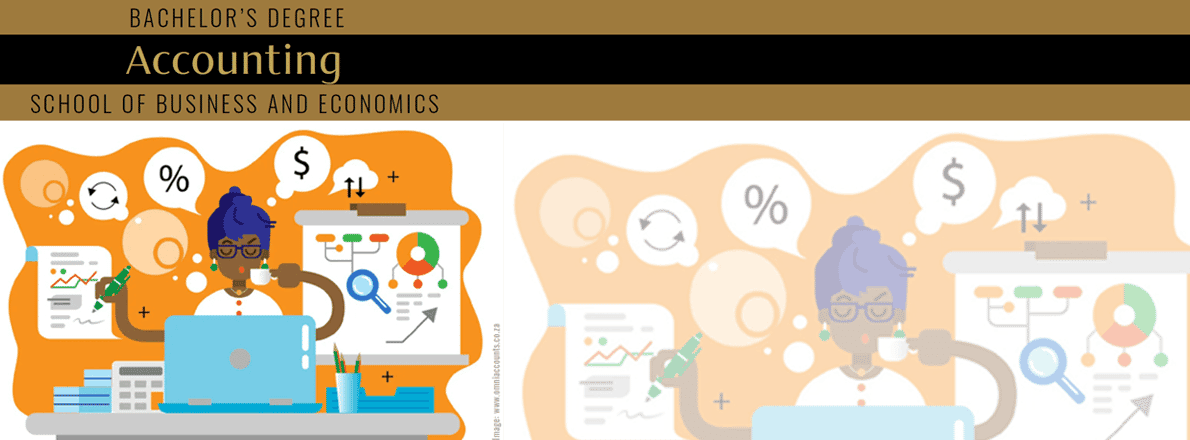
The Master of Project Management (MA) program objective is to prepare students with the right technical skills to qualify them as individuals responsible for management roles in the construction and operation of major projects. The Master of Project Management program is offered online via distance learning. After evaluating both academic record and life experience, AIU staff working in conjunction with Faculty and Academic Advisors will assist students in setting up a custom-made program, designed on an individual basis. This flexibility to meet student needs is seldom found in other distance learning programs. Our online program does not require all students to take the same subjects/courses, use the same books, or learning materials. Instead, the online Master of Project Management curriculum is designed individually by the student and academic advisor. It specifically addresses strengths and weaknesses with respect to market opportunities in the student’s major and intended field of work. Understanding that industry and geographic factors should influence the content of the curriculum instead of a standardized one-fits-all design is the hallmark of AIU’s unique approach to adult education. This philosophy addresses the dynamic and constantly changing environment of working professionals by helping adult students in reaching their professional and personal goals within the scope of the degree program
Important:
Below is an example of the topics or areas you may develop and work on during your studies. By no means is it a complete or required list as AIU programs do not follow a standardized curriculum. It is meant solely as a reference point and example. Want to learn more about the curriculum design at AIU? Go ahead and visit our website, especially the Course and Curriculum section: https://wp24.aiu.edu/CourseCurriculum.html
Communication & Investigation (Comprehensive Resume)
Organization Theory (Portfolio)
Experiential Learning (Autobiography)
Academic Evaluation (Questionnaire)
Fundament of Knowledge (Integration Chart)
Fundamental Principles I (Philosophy of Education)
Professional Evaluation (Self Evaluation Matrix)
Development of Graduate Study (Guarantee of an Academic Degree)
Organization, management, and leadership
Statistics for management
Project management finance
Introduction to project and program management
Risk management
Planning and scheduling
Executive decision making
Managing external projects
Project portfolio management
Supply chain management
Decision support systems
Advanced supply chain management
Procurement and contracting
Data mining
Project estimation and cost management
Directed computational
project management
Good communication skills
Able to think clearly and act quickly
Able to stay calm in difficult situations
Technical aptitude
aiu.edu/apply-online.html
Pioneer Plaza/900 Fort Street Mall 410
Honolulu, HI 96813
800-993-0066 (Toll Free in US)
808-924-9567 (Internationally)
Masters Thesis Project MBM300 Thesis Proposal MBM302 Master Thesis (7,500 words)
Publication
Each graduate is encouraged to publish their research papers either online in the public domain or through professional journals and periodicals worldwide.
About Us

Accreditation
Atlantic International University offers distance learning degree programs for adult learners at bachelors, masters, and doctoral level. With self paced program taken online, AIU lifts the obstacles that keep professional adults from completing their educational goals. Programs are available throughout a wide range of majors and areas of study. All of this with a philosophically holistic approach towards education fitting within the balance of your life and acknowledging the key role each individual can play in their community, country, and the world.
Atlantic International University is accredited by the Accreditation Service for International Schools, Colleges and Universities (ASIC). ASIC Accreditation is an internationally renowned quality standard for colleges and universities. Visit ASIC’s Directory of Accredited Colleges and Universities. ASIC is a member of CHEA International Quality Group (CIQG) in the USA, an approved accreditation body by the Ministerial Department of the Home Office in the UK, and is listed in the International Directory of the Council for Higher Education Accreditation (CHEA). The University is based in the United States and was established by corporate charter in 1998.
Our founding principles are based on the United Nations Universal Declaration of Human Rights; per article 26, AIU believes that Higher Education is a Human Right. The University has implemented a paradigm shifting educational model for its academic programs that have allowed it to move closer to this goal through the self-empowerment of its students, decentralization of the learning process, personalized open curriculum design, a sustainable learning model, developing 11 core elements of the Human Condition within MYAIU, and utilizing the quasi-infinite knowledge through the use of information technology combined with our own capacity to find solutions to all types of global issues, dynamic problems, and those of individuals and multidisciplinary teams. Due to these differentiations and the university’s mission, only a reputable accrediting agency with the vision and plasticity to integrate and adapt its processes around AIU’s proven and successful innovative programs could be selected. Unfortunately, the vast majority of accrediting agencies adhere to and follow obsolete processes and requirements that have outlived their usefulness and are in direct conflict with the university’s mission of offering a unique, dynamic, affordable, quality higher education to the nontraditional student (one who must work, study what he really needs for professional advancement, attend family issues, etc.). We believe that adopting outdated requirements and processes would impose increased financial burdens on students while severely limiting their opportunities to earn their degree and advance in all aspects. Thus, in selecting the ASIC as its accrediting agency, AIU ensured that its unique programs would not be transformed into a copy or clone of those offered by the 10,000+ colleges and universities around the world. Since ASIC is an international accrediting agency based outside the United States, we are required by statute HRS446E to place the following disclaimer: ATLANTIC INTERNATIONAL UNIVERSITY IS NOT ACCREDITED BY AN ACCREDITING AGENCY RECOGNIZED BY THE UNITED STATES SECRETARY OF EDUCATION. Note: In the United States and abroad, many licensing authorities require accredited degrees as the basis for eligibility for licensing.

In some cases, accredited colleges may not accept for transfer courses and degrees completed at unaccredited colleges, and some employers may require an accredited degree as a basis for eligibility for employment. Potential students should consider how the above may affect their interests, AIU respects the unique rules and regulations of each country and does not seek to influence the respective authorities. In the event that a prospective student wishes to carry out any government review or process in regards to his university degree, we recommend that the requirements of such are explored in detail with the relevant authorities by the prospective student as the university does not intervene in such processes. AIU students can be found in over 180 countries, they actively participate and volunteer in their communities as part of their academic program and have allocated thousands of service hours to diverse causes and initiatives. AIU programs follow the standards commonly used by colleges and universities in the United States with regards to the following: academic program structure, degree issued, transcript, and other graduation documents. AIU graduation documents can include an apostille and authentication from the US Department of State to facilitate their use internationally.
The AIU Difference
It is acknowledged that the act of learning is endogenous, (from within), rather than exogenous.
This fact is the underlying rationale for “Distance Learning”, in all of the programs offered by AIU. The combination of the underlying principles of student “self instruction”, (with guidance), collaborative development of curriculum unique to each student, and flexibility of time and place of study, provides the ideal learning environment to satisfy individual needs.
AIU is an institution of experiential learning and nontraditional education at a distance. There are no classrooms and attendance is not required.
The AIU Difference
MISSION:
To be a higher learning institution concerned about generating cultural development alternatives likely to be sustained in order to lead to a more efficient administration of the world village and its environment; exerting human and community rights through diversity with the ultimate goal of the satisfaction and evolution of the world.
VISION :
The empowerment of the individual towards the convergence of the world through a sustainable educational design based on andragogy and omniology.
Organizational Structure
Dr. Franklin Valcin
President/Academic Dean
Dr. Ricardo Gonzalez
Chief Operation Officer
and MKT Director
Dr. Miriam Garibaldi
Viceprovost for Research
Dr. Ofelia Miller
Director of AIU
Juan Pablo Moreno
Director of Operations
Paula Viera
Director of
Intelligence Systems
Felipe Gomez
Design Director / IT Supervisor
Daritza Ysla
IT Coordinator
Nadeem Awan
Chief Programming Officer
Dr. Jack Rosenzweig
Dean of Academic Affairs
Dr. Edward Lambert
Academic Director
Dr. Ariadna Romero
Advisor Coordinator
Nadia Gabaldon
Academic Coordinator
Jhanzaib Awan
Senior Programmer
Leonardo Salas
Human Resource Manager
Benjamin Joseph
IT and Technology Support
Rosie Perez
Finance Coordinator
Chris Soto
Admissions Counselor
Dr. José Mercado
Chief Executive Officer
Chairman of the Board of Trustees
Linda Collazo
Logistics Coordinator
Irina Ivashuk
Alumni Association
Coordinator
Clara Margalef
Director of Special Projects
of AIU
David Jung
Corporate/Legal Counsel
Bruce Kim
Advisor/Consultant
Thomas Kim
Corporate/
Accounting Counsel
Camila Correa
Quality Assurance Coordinator
Maricela Esparza
Administrative Coordinator
Chris Benjamin
IT and Hosting Support
Mayra Bolivar
Accounting Coordinator
Roberto Aldrett
Communications Coordinator
Giovanni Castillo
IT Support
Jaime Rotlewicz
Dean of Admissions
Dr. Mario Rios
Academic Advisor
Michael Phillips
Registrar’s Office
Rene Cordon
Admissions Support
Jenis Garcia
Admissions Counselor
Ricardo González, PhD
Provost
Dr. Silvia Restorff
Academic Advisor
Dr. Prakash Menon
Academic Advisor
Carlos Aponte
Telecommunications
Coordinator
Dr. Nilani Ljunggren De Silva
Academic Advisor
Dr. Scott Wilson
Academic Advisor
Dr. Mohammad Shaidul Islam
Academic Advisor
Dr. Edgar Colon
Academic Advisor
Deborah Rodriguez
Academic Tutor Coordinator
Cyndy Dominguez
Academic Tutor Coordinator
Kinmberly Diaz
Admissions Support Tutor
Amalia Aldrett
Admissions Coordinator
Sandra Garcia
Admissions Coordinator
Jose Neuhaus
Admissions Support
Junko Shimizu
Admissions Coordinator
Veronica Amuz
Admissions Coordinator
Alba Ochoa
Admissions Coordinator
Contact Us
Atlantic International University
900 Fort Street Mall 905 Honolulu, HI 96813
Quick Links
Home | Spanish | Online Courses | Available Courses | Vrtual Campus | Career Center | Available Positions | Ask Career Coach | The Job Interview | Resume Writing | Accreditation | Areas of Study | Bachelor Degree Programs | Masters Degree Programs | Doctoral Degree Programs | Course & Curriculum | Human Rights | Online Library | Representations | Student Publication | Sponsors | General Information | Mission & Vision | School of Business and Economics | School of Science and Engineering | School of Social an Human Studies | Media Center | Admission Requirements | Apply Online | Tuition | Faculty & Staff | Distance Learning Overview | Student Testimonials | Frequently Asked Questions | Register for Program | Privacy Policy | FAQ







